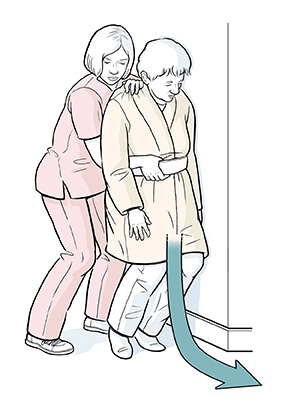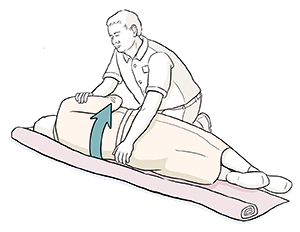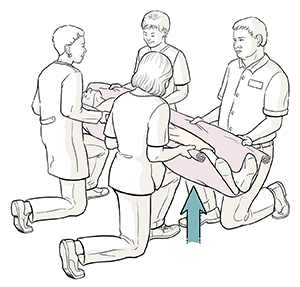When a Patient Falls
Falls may occur at any time, while the patient is on their bed, walking, or being transferred. Once the momentum has started, it’s almost impossible to stop a patient from falling. By trying to do so, you can injure yourself. Instead, guide the patient to the nearest safe surface, which is generally the ground. Then get help to move the patient back to a bed, or stretcher.
Guiding the fall
When a patient starts to fall, help them to the floor with as little impact as possible. If you’re near a wall, gently push the patient against it to slow the fall. If you can, move close enough to “hug” the patient. Focus on protecting the patient’s head as you move down to the floor. Then call for help.

Moving a fallen patient
Patients who’ve fallen may feel dizzy or faint. Reassure them as you determine whether they’ve been injured. If so, tend to the injury before doing anything else. Evaluate the patient from head to foot. Wipe up any spills. If the patient isn’t injured, you can prepare for the move back to a bed or stretcher. Get help. Four or more people may be needed. A mechanical lift may be the best choice if the patient has had a stroke, is not independent, or is obese.
Step 1. Roll onto blanket
-
Roll the patient onto their side.
-
Put a blanket under the patient and roll the patient onto it.
-
Position two or more people on each side of the patient.

Step 2. Lift from floor
-
Kneel on one knee and grasp the blanket.
-
On a count of three, lift the patient as one unit and stand up.
-
Move the patient onto a bed or stretcher.

Preventing a fall
Remember: Be proactive. Assess and identify a patient as a fall risk and start interventions to prevent a fall.
Online Medical Reviewer:
Heather M Trevino BSN RNC
Online Medical Reviewer:
Marianne Fraser MSN RN
Online Medical Reviewer:
Shaziya Allarakha MD
Date Last Reviewed:
8/1/2024
© 2000-2025 The StayWell Company, LLC. All rights reserved. This information is not intended as a substitute for professional medical care. Always follow your healthcare professional's instructions.